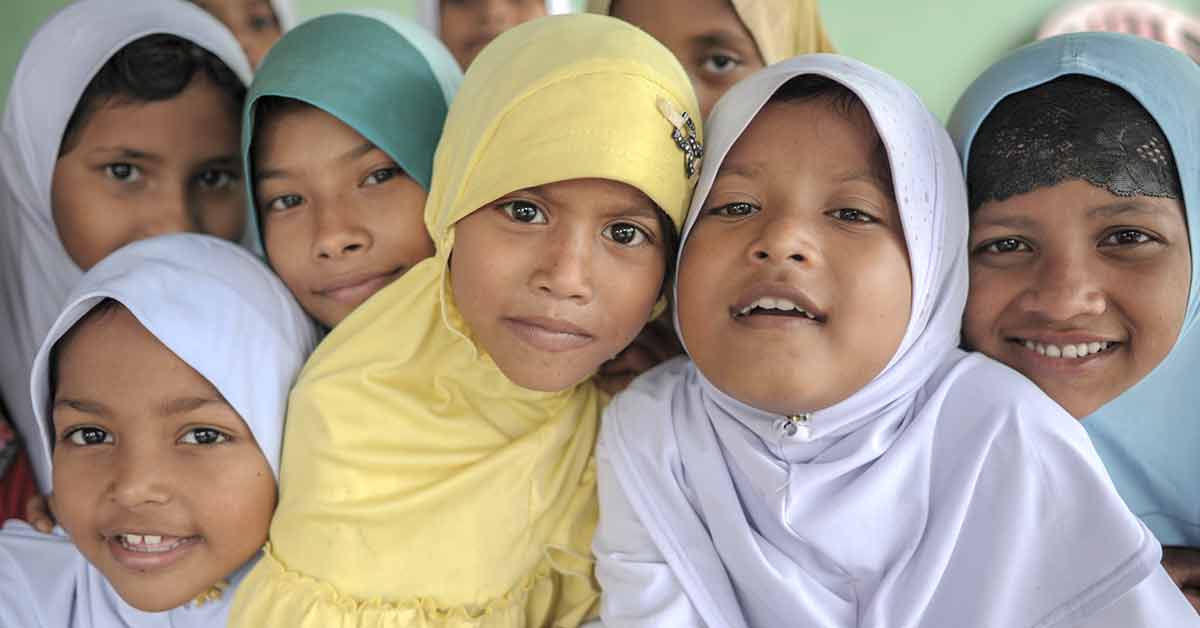At the Fourth World Conference on Women in Beijing in 1995, participants promised to advance the rights of women and girls everywhere. Part of that promise, set out in the historic Beijing Declaration and Platform for Action, was to ensure education for all girls. A recent study by the United Nations Educational, Scientific and Cultural Organization’s (UNESCO) Global Education Monitoring Report examines whether the promise has been kept.
A quarter-century after the conference and coming just after the International Day of the Girl Child on 11 October, the good news is that 180 million more girls are enrolled in primary and secondary school than in 1995, and that more girls than ever are staying in school and graduating.
There is good news in tertiary education as well: three times more women are studying at university in this generation than the last. In Morocco, for example, just 30 women were enrolled for every 100 men in the early 1990s; today there is parity.
Outcomes matter as much as access. Here, there has been significant progress. In more than 50 percent of middle- and high-income countries, girls perform just as well as boys in mathematics, and outperform them in 25 percent of these countries.
But the poorest girls are still left behind. Of the 59 million primary-school-age children around the world who were not attending school in 2018, 12 million – 75 percent of them girls – had never set foot in a classroom and were unlikely ever to do so. In over 20 countries, most of them in Sub-Saharan Africa, hardly any poor rural girls will graduate from upper secondary school.
For the most marginalised, schools are still unsafe environments where verbal and sexual harassment, abuse, and violence prevail. In many places, high pregnancy rates very often keep girls out of school, perpetuating the cycle of poverty. While the prevalence of early pregnancy fell by one-third among girls aged 15-19 between 1995 and 2020, early pregnancy rates remain high – especially in Sub-Saharan Africa, where one-quarter of 18-year-old girls are already mothers.
It is also essential that comprehensive sexuality education is introduced in all schools. This type of counselling not only helps students resist peer pressure to engage in or accept violence, but also leads to a reduction in early pregnancies.
There has been some promising progress in the last few years, such as Sierra Leone’s decision in March to overturn a ban on pregnant girls’ school attendance. But two countries still enforce a ban on pregnant girls and young mothers in education: Equatorial Guinea and Tanzania.
Other barriers are less serious but hold girls back as well. Consider Rabia Nusrat, who wanted to study engineering ever since she was a child in Pakistan. Despite her parents urging her to select a less male-dominated subject, she insisted and now is the first in her family and community to complete a degree in engineering in Pakistan.
But not all girls are equally persistent, and the reality is that not enough teachers and career counsellors have the training to help correct the gender imbalance in science, technology, engineering, and mathematics. In Organisation for Economic Co-operation and Development (OECD) countries, only 14 percent of the top-performing girls in science or mathematics are expected to work in science and engineering, compared to 26 percent of top-performing boys.
School textbooks also perpetuate gender norms that hold girls back. Often, the text and images portray women in traditional homebound roles and less prestigious occupations, while men are depicted as powerful leaders. Such archaic stereotypes have no place in contemporary teaching materials and should be removed.
The UNESCO report also highlights the importance of having more women in leadership positions in the teaching sector. Teaching is a feminised profession, which perpetuates gender-unequal norms regarding labour-market opportunities. Still, the glass ceiling is a reality even here. In 48 middle- and high-income countries, there is a gender gap of 20 percentage points between teachers and head teachers in lower secondary schools.
Female leadership does not automatically translate into improvements for girls, but female leaders can change social and gender norms through legislation and policies, and by acting as visible role models for girls.
Next year, the world’s governments will sign a new declaration on the rights of a new generation of women at the Generation Equality Forum. Education deserves a central position in this new declaration, because girls continue to be more likely to face the worst forms of exclusion – especially as COVID-19 threatens to push inequalities to extremes.
It is important to celebrate the progress that has been made so far. But we also need to remember how much remains to be done in order to achieve true gender equality in and through education.
Related Articles:

